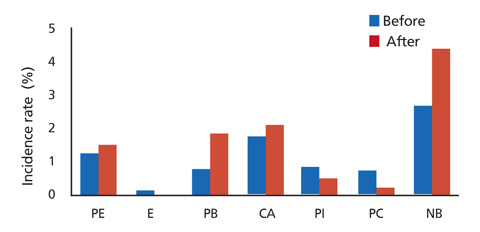J Korean Med Assoc.
2016 Jun;59(6):424-428. 10.5124/jkma.2016.59.6.424.
Program for obstetric care supporting underserved areas in Korea: outcome and evaluation standards
- Affiliations
-
- 1Department of Obstetrics and Gynecology, Daegu Catholic University Medical Center, Daegu, Korea. magu815@cu.ac.kr
- KMID: 2305542
- DOI: http://doi.org/10.5124/jkma.2016.59.6.424
Abstract
- In 2011, the government of South Korea established a support program for obstetric care for underserved geographical areas to address the serious problem of the low birth rate. The birth rate of some underserved areas has since been increasing, and several indexes of mother and child health have since improved. However, various problems have also been noted in the evaluation of the policy for this support program. The birth rate of some rural areas remains low, and the inadequacy of professional health care providers has not been resolved. The medical fee for delivery should be rationalized, and countermeasures for medical litigation should be established. Furthermore, better communication between local residents and healthcare providers are necessary to improve maternal and child health. For effective long-term provision of obstetric care through this support program for underserved areas, new outcome and evaluation standards are necessary. Critical requirements for launching an initial support program and outcomes including the birth rate and indices of maternal and child health should be itemized and assessed. Support for health care providers requires expansion including support personnel, the establishment of a transfer system, and measures to address legal problems. A multifaceted approach including regular maternal education and an information network system for local residents is necessary. Future support programs should include total care for maternal and child health, so cooperation of the government offices and health care centers is essential. At the same time, new standards of evaluation of obstetric care support programs for underserved areas need to be established for appropriate evaluation of comprehensive family health.
Keyword
MeSH Terms
Figure
Cited by 1 articles
-
Revaluation of measures in obstetrically underserved area
Yoon Ha Kim
J Korean Med Assoc. 2016;59(6):414-416. doi: 10.5124/jkma.2016.59.6.414.
Reference
-
1. Na BJ, Kim HJ, Lee JY. An early stage evaluation of the supporting program for obstetric care underserved areas in Korea. J Korean Med Sci. 2014; 29:764–770.
Article2. Lee GY. Establishment of health care delivery system between the integrated center for high-risk pregnant women and neonates and the maternity care in the underserved area. Sejong: Ministry of Health and Welfare;2015.3. Ministry of Health and Welfare. The evaluation of supporting methods for reliable antenatal care and birth for pregnant women in obstetrically underserved area. Seoul: Ministry of Health and Welfare;2013.4. Park WS. Development of national patient transfer system for the integrated approach in high-risk mother and infant care. Sejong: Ministry of Health and Welfare;2015.5. Health Insurance Review and Assessment Service. National health medical survey: medical fee for system. Wonju: Health Insurance Review and Assessment Service;2012.6. Kim HY, Moon CS. Integrated care center for high risk pregnancy and neonate: an analysis of process and problems in obstetrics. Korean J Perinatol. 2014; 25:140–152.
Article7. Lee KY. Need for an intensive care unit for high risk pregnancy and a neonatal center. Korean J Perinatol. 2011; 22:280–284.8. ACOG Committee Opinion No. 586: Health disparities in rural women. Obstet Gynecol. 2014; 123(2 Pt 1):384–388.9. Korean Society of Obstetrics and Gynecology. National health medical survey: current state of the residentship and specialist of obstetrics and gynecology. Seoul: Korean Society of Obstetrics and Gynecology;2013.
- Full Text Links
- Actions
-
Cited
- CITED
-
- Close
- Share
- Similar articles
-
- An Early Stage Evaluation of the Supporting Program for Obstetric Care Underserved Areas in Korea
- Measures to address obstetrically underserved areas: limitations and future directions
- Improvement of supportive systems for medically-underserved areas
- Why Women Living in an Obstetric Care Underserved Area Do Not Utilize Their Local Hospital Supported by Korean Government for Childbirth
- Maternity care system for high risk pregnant women in obstetrically underserved area


